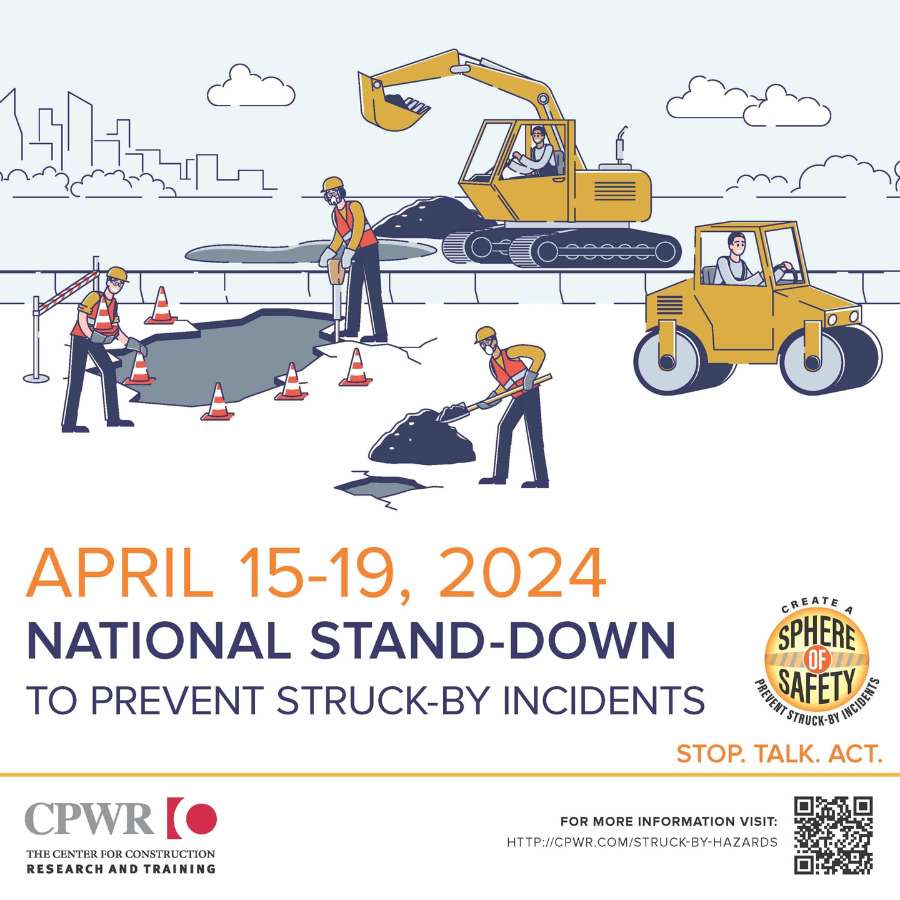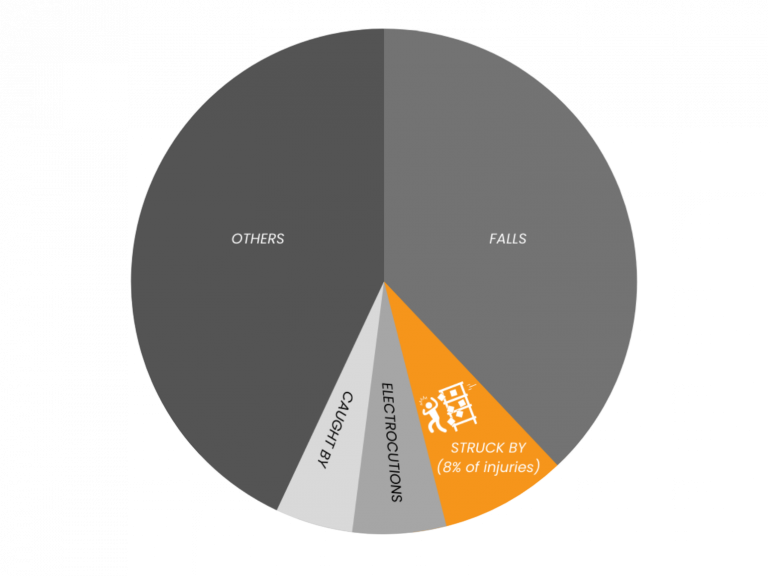
Every April, the construction sector globally pauses to mark the National Stand-Down to Prevent Struck-By Incidents. This initiative, aligning with National Work Zone Awareness Week, shines a spotlight on a persistent challenge within the industry: struck-by incidents. These incidents, leading to severe injuries and fatalities, prompt organizations to halt operations temporarily to reflect on and bolster safety measures. The stand-down is a call to action, emphasizing education, open dialogue, and a unified effort toward safer workplace environments.

Struck-by incidents occur when an individual is hit by an object or equipment, which can range from construction materials to machinery in motion. The Occupational Safety and Health Administration (OSHA) identifies four primary types: flying, falling, swinging, or rolling objects. These hazards stand as the top cause of construction fatalities and a significant source of nonfatal injuries, highlighting a critical area for intervention. The diversity of these incidents underlines the myriad dangers present in construction sites, demanding comprehensive preventive strategies.
The annual Stand-Down initiative, propelled by the efforts of the NORA Construction Sector Council, represents a broader commitment to mitigating workplace hazards through collaboration, research, and the implementation of effective safety protocols. The event not only raises awareness about the risks of struck-by incidents but also disseminates practical preventive measures. This collaborative endeavor symbolizes a partnership-driven approach, uniting stakeholders across the industry in a common goal: enhancing safety and minimizing risks.
Deliver a toolbox talk on preventing struck-by incidents.
Hold training on struck-by hazards and controls.
Distribute new high-visibility clothing items.
Attend a webinar
The stand-down is a vital platform for fostering a culture of safety, encouraging dialogues between employers and workers about potential hazards and preventive measures. This period is characterized by an array of activities — from engaging webinars to interactive toolbox talks — each designed to equip organizations with essential knowledge and tools to protect their workforce. Such engagement is pivotal, transforming the stand-down into a moment of learning and proactive safety planning.
Struck-by incidents are the 2nd leading cause of death among construction workers and the leading cause of nonfatal injuries in the construction industry. The National Stand-Down to Prevent Struck-by Incidents offers a voluntary yet critical opportunity for employers to engage directly with employees about safety, focusing specifically on “Struck-by Hazards” and emphasizing the importance of training and prevention.

In BLS’ report on occupational injuries for 2022, out of 1069 fatalities, 8% of them were due to struck-by incidents.
There are high rates of struck-by incidents in the construction industry. Below are some recent incidents.
These incidents paint a stark picture of the consequences of failing to comply with safety regulations. Each case not only resulted in financial penalties but also, more tragically, in loss of life or severe injury. The common thread in these examples is the clear indication that compliance with safety standards is essential to protecting workers and preventing tragedies. The National Stand-Down to Prevent Struck-By Incidents serves as a vital reminder of the construction industry’s ongoing responsibility to uphold the highest safety standards. By fostering a culture of safety that prioritizes compliance and proactive prevention, the industry can move closer to its goal of eradicating struck-by incidents, ensuring the well-being of every individual on the construction site.
Take a moment to gather workers on a site, talk about the potential risks on the job, conduct safety equipment inspections, and highlight safety solutions to reduce risks.